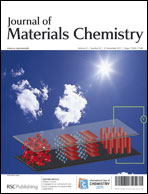Three hexatriene-type photochromic compounds 4,5-bis(2,4-dimethyl-5-phenylthiophene-S,S-dioxide-3-yl)-2-phenylthiazole, 1, 4,5-bis(2-methylbenzo[b]thiophene-S,S-dioxide-3-yl)-2-phenylthiazole, 2, and 1,2-bis(2,4-dimethyl-5-phenylthiophene-S,S-dioxide-3-yl)-3,3,4,4,5,5-hexafluorocyclopentene, 3, are synthesized and their photochromic and fluorescence properties are studied, which are analogous to photochromic molecules of triangle terarylene and diarylethene with oxidized aryl units containing S,S-dioxide moieties. These compounds showed photochromic coloration reaction to form a ring-closed form isomer having a cyclohexadiene backbone. Compound 2 showed backward cycloreversion reaction with about 2.4% of photochemical quantum yield, whereas compounds 1 and 3 showed markedly low cycloreversion quantum yields less than 0.1%. Their colored isomers exhibited green or orange fluorescence with relatively high fluorescence quantum yields. Compound 1 also showed similar fluorescence switching nature and fluorescence pattern formation in a stable amorphous film. Intramolecular hydrogen bonding between S,S-dioxide units and methyl groups at photo-reactive carbon atoms is discussed on the basis of molecular structure determined by X-ray single analysis and quantum chemical calculation in the DFT method, which is regarded to contribute to the enhanced emission nature and suppressed cycloreversion photoreactivity of the ring-closed form isomers.


 Please wait while we load your content...
Please wait while we load your content...